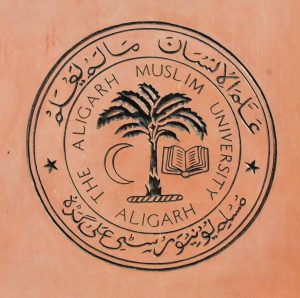
Aligarh Muslim University is one of the best Universities offering higher education in India to a large section of students having from different states of India as well as from all over the world. The university is open to all irrespective of caste, creed, religion or gender.
 In 1877, Sir Syed Ahmad Khan founded the Muhammadan Anglo Oriental (MAO) College in Aligarh and later became the Aligarh Muslim University in 1920. Once Gandhi Ji said about Sir Syed Ahmad Khan “Sir Syed was the Prophet of Education”. Spread over 467.6 hectares in the city of Aligarh, Uttar Pradesh. AMU offers more than 300 courses of traditional and modern branches of education. It has more than 28,000 students who reside in 19 halls and 80 hostels.
In 1877, Sir Syed Ahmad Khan founded the Muhammadan Anglo Oriental (MAO) College in Aligarh and later became the Aligarh Muslim University in 1920. Once Gandhi Ji said about Sir Syed Ahmad Khan “Sir Syed was the Prophet of Education”. Spread over 467.6 hectares in the city of Aligarh, Uttar Pradesh. AMU offers more than 300 courses of traditional and modern branches of education. It has more than 28,000 students who reside in 19 halls and 80 hostels.
Recently, I have visited Aligarh Muslim University to cover all those places which have historical and architectural importance. Explorer inside me, want to see all those buildings of AMU as the tourist because I believe they secure an important place in Indian heritage. The University has more than 60 heritage sites in its campus.

I started my Heritage walk in the very early morning from Bab-e-Syed. Cold Waves But No fog in the city. Children in school uniform and woollen caps looking smart and going on scooters and rickshaws.
Bab-e-Syed: It is the main gate to Aligarh Muslim University. In Urdu, Bab means Gate. It is Indo-Islamic architecture and the verses of Holy Quran scripted on it.
Because sunlight directly falling on Bab-e-Syed, it was shinning like Orange Sapphire.
By entering Bab-e-Syed, on my left side, I saw the series of beautiful guest houses named Guest House No. 1, Guest House No. 2 etc. Roads were very clean and well maintained.
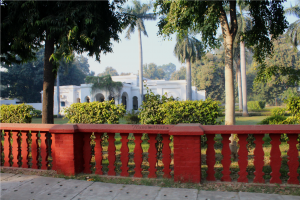
From Guest House No.2, I took a left turn towards Morrison Road. Series of trees on both sides of the Morrison Road giving the environment a special touch. I passed by Morrison Court Hostel Park and reached Sir Syed Hall.
Sir Syed Hall: Sir Syed Ahmad Khan was one of those early pioneers who recognized the critical role of residential life in modern education. He always recognized the relevance of residential facilities for the empowerment of the poor and backward Communities. His dream was to establish a campus with hostel facilities.

It’s the place, where the Mohammadan Anglo Oriental (MAO) College started in 1877 and later became the Aligarh Muslim University in 1920. It is the place where one can get to know about the history of Aligarh Movement.
In the beginning, 12 Rooms were built in 1880 hence it was called Pakki Barrack. Thereafter more students enrolled, as a result, Kacchi Barrack was constructed to the North of Pakki Barrack. Initially, Pakki Barrack served as MAO Campus and all the departments operated from the premises. Kacchi Barrack was constructed in 1882 to provide residential facilities to the students of MAO College. Thus MAO College had two square-shaped adjacent campuses. Presently these portions are respectively called as Sir Syed Hall (South) and Sir Syed Hall (North) and purely serving as student’s residences. These buildings are decorated with arches, beautiful carvings and ornamentation work.
Sir Syed Hall (North): Though, it was known as Kacchi Barrack, but structures of these buildings are very strong. Red brick or stone square-shaped campuses having a very beautiful garden where students were studying. One of the main entrance is Bab-e-Ishaq. Some important landmarks of S.S North.

The atmosphere in the campus was so sincere. Alike other hostels all students were roaming here and there. Some were busy in studying, chatting, getting ready for class and rushing for the mess. Kachhi Barrack was looking like a movie set of the 1940s.
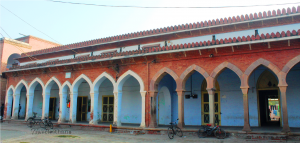
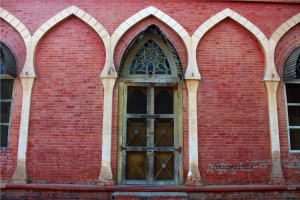


Sir Syed Hall (South): Initially, It was known as Pakki Barrack and I can say it one of the campuses of AMU that you all should visit. Beautiful Red stone buildings and greenery everywhere. My mind was asking me ‘Why didn’t I study here?”. Most of the buildings nowadays serving as student’s hostels. Some important attractions that one should not miss while visit SS Hall (South).
Strachey Hall: Sir Syed’s vision was to give college a look of Cambridge and Howard. Strachey Hall was the first Building to come up on the Campus. It was completed in the year 1885 and named after British Indian Civil Servant Sir John Strachey.



The clock was showing 9:47 am and it alarmed me to speed up otherwise I will not cover all monuments of the campus.
Clock Tower: It is situated just in front of Strachey Hall. The clock was sent by Theodore Beck (Then, Principal of MAO College).
Trust me…From Clock Tower, The Panoramic view of South Campus or Pakki Barack (Strachy Hall and Jama Masjid)looking the same as it was picturised in the 1963’s blockbuster Hindi Movie ‘Mere Mehboob’. Every doomed and arch saying the glory of these buildings. According to one local person, various Hindi movies like Haidar, Aligarh, Mohabbatein, Ranjhanna etc were shooted in the campus.
Victoria Gate: Once, It was main entrance of College and named after Queen Victoria of England in 1914.



Jama Masjid: The construction of Jama Masjid was started in the year 1879 by the founder of the University, Sir Syed Ahmad Khan and completed in January 1915. It is one of the cleanest religious places I have seen till date. Some locals and students were doing religious practices in the lawn of masjid.

Tomb of Sir Syed: Sir Syed passed away on 27 March 1898 and buried beside Jama Masjid.

Before leaving Sir Syed Hall, I saw one food joint serving ‘Garma-Garam Poori and Sabzi’ and Masala Tea. Because of craving, my mind didn’t allow me to avoid. So, I had ‘Poori’. Yea, without any doubt food, was yummy and cheap too and it is one of the reasons that there was a lot of crowds in his shop. After Sir Syed Hall, I returned back on Morrison Road took a left turn towards AMU gate. I was passed by Latouche-Mumtaz Boarding House (1903), Post Office, Hockey Ground, Aftab Hostel (1932) and Macdonnell Hostel.


Then, I exit from the Gate.
Like other Indian cities, the trend of petrol-diesel autorickshaws was not here. They still prefer Cycle Rickshaw as local transport. And I believe, If you want to explore any old market of Indian cities then Cycle Rickshaw is a good option because Open Roof and comfortable seat give you better space for clicking pictures.
V.M. Hall or Viqar-ul-Mulk Hall: In 1932, V.M. Hall was constructed in the name of Viqar-ul-Mulk, the famous Muslim leader and most ardent follower of Sir Syed. It comprises of 4 Hostels, Auditorium, Library, Dining Hall, and Rose Garden.
I suggest you watch a Hindi movie ‘Nai Umar Ki Nai Fasal (1966)’ before V.M. Hall. It takes you in that era of that time student politics which purely means patriotism. Most of the scenes were shot in the V.M Hall.

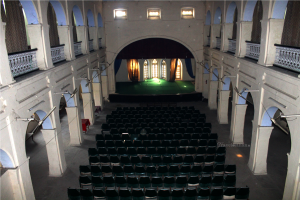
Supervisor of the hostel told me that ‘Student Parliament’ scene of movie ‘Nai Umar Ki Nai Fasal’ were picturised here, in which that time superstar Tanuja and Rajeev delivered a powerful speech on the Role of Students in politics.
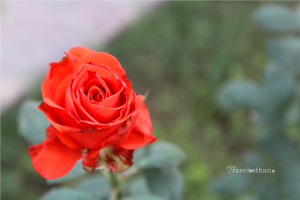

Now time for Minto Circle
Visiting and clicking pictures of Minto Circle School is not easy during class time because it distracts students from their studies. So, I met Principal Sir and requested him for visiting campus. He is a very generous person and allowed me to visit the campus during lunch recess and He told his associate to guide me each and every important place to visit.
Minto Circle: Minto Circle was founded in 1875 by the educationist and social reformer Sir Syed Ahmad Khan. Its original name was the “Muhammadan Anglo-Oriental Collegiate School”. The school bore the name, Muslim University High School, but became popular as Minto Circle after the then Viceroy of India, Gilbert Elliot-Murray-Kynynmound, 4th Earl of Minto.

It is one of the finest building which looking still very attractive after 140 years. Minto Circle having a circular playground which was surrounded by administrative building, the senior wing, hostel, primary section and hostel.

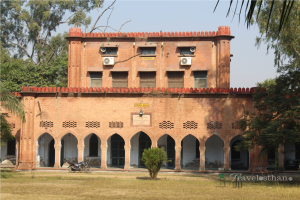
Minto Circle, I moved back on University Road, my next point was Musa Dakri Museum.
Musa Dakri Museum: It houses numerous archaeological objects like Sketches of Sir Syed Ahmad Khan, Documents of MAO College, wooden models, Buddhist sculptures, paintings, dresses, carved stone pieces and pillars, which Sir Syed Ahmad preserved during his lifetime.
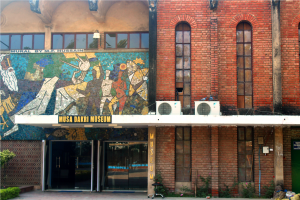
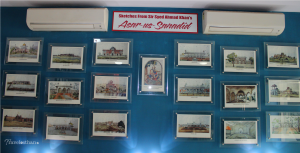





Next building along with Musa Dakri Museum is famous Maulana Azad Library.
Maulana Azad Library: It is Asia’s largest University library which has more than 18,00,000 books. The seven-storey building is surrounded by lawns and gardens. It was established more than 100 years ago. Earlier It was named as Lytton Library and now, It is known as Maulana Abul Kalam Azad Library.

My next attraction was Sir Syed House.
Sir Syed House: The House, which was occupied by Sir Syed Ahmad Khan for more than two decades, is now the location of Sir Syed Academy. As a tribute to the founder, the house was renovated and converted into a Sir Syed Memorial in the early seventies.


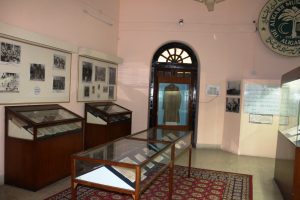
Nizami Centre for Quranic Studies: It is situated on the campus of Sir Syed House. A beautiful mosque is also with it. It is an architectural beauty.
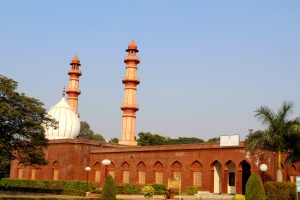
Other Places that I missed to cover in my journey but one should visit those places like; Kennedy Auditorium, Art Gallery, University Circle, Canteen, Union Hall, Faiz Gate, City High School, Gulshan-e-Syed, Tibbiya College etc.
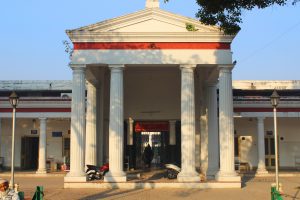

Please keep things in mind while visiting AMU for a heritage walk:
- It is an educational institution, so don’t make noise.
- Do not wear inappropriate costumes.
- Do not disturb teachers and professors.
- Take permission before entering an important building.
- Always use dustbins and don’t pluck the flowers.
One of the main tourist attractions of Aligarh and also having historical importance is Aligarh Fort.
Aligarh Fort: Also known as ‘Aligarh ka Quila’. It was constructed under the reign of Ibrahim Lodhi on G T Road. It was one of the strongest forts in India and is situated on the distance of 3kms from AMU. Aligarh Fort is now under the control of Botany department of AMU. Botanical Garden is must see the place of Aligarh Fort.
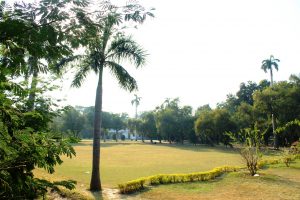




The last message of Sir Syed Ahmad Khan to all children.
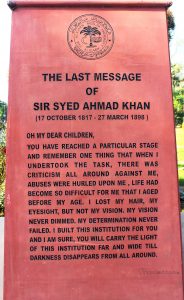
How to Reach:
Airways: Nearest International Airport is in New Delhi (140km) directly connected with almost all major cities of the world.
Railways: Aligarh Railway station is one New Delhi- Kolkata line. It is also a Junction of Indian Railways. Directly trains available for all major cities of India.
Roadways: Aligarh is well connected with all nearby cities like New Delhi, Kanpur, Lucknow, Agra, Mathura, Jaipur, Chandigarh etc.
Where to Stay: All types of hotels and guest houses available in Aligarh.











Beautiful photographs of our University. I wish the blogger could have seen the rest of the places also. Its a pleasure to read and feel the blogger’s interest in the impressive architecture of AMU.
Thank You Ma’am. Wish to visit again in Future.
You must visit again.
Respected Maam,
You are really great, and your dedication is wordless.
Thanks for recognising the feelings
I have in my heart for my alma mater and I am proud and lucky to work here.
I wish to give back to my institution to the best of my ability.
Once again ..thank you for your kind words. Such words keep me going.
Fantastic depiction of our campus.
Thank You Sir 🙂
Your Campus is really very beautiful
Yes Sir…especially if it is by a guest.
beautifully scripted …….last message by Sir Syed Ahmad Khan were inspiring.
Very great, atleast one visit to glance over all university is very significant. I yearn to visit again. Miss u Aligarh.
Thank You Mr Sartaj
Please do come again. We look forward to your next visit.
While reading & going through your article i felt nostalgic & felt going back to AMU & live forever with same friends, courses & society.
That was the best days of my life i can never forget.
Thank you
Dear Mr Irfan,
Visit AMU again 🙂
Awesome …..the narration and photo shoots are perfect match , barring few corrections , like MAL is a new building and is under 70 years .Lord Lytton library was MAO Library,it is still there besides University Mosque.
I will update it.
Thank You sir for your valuable comment 🙂